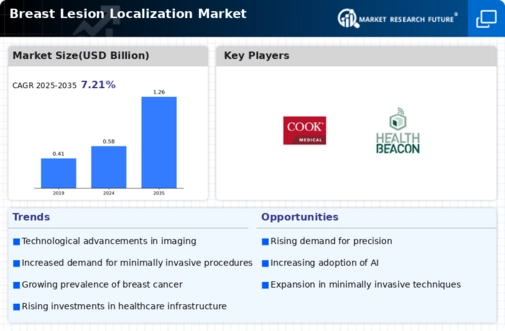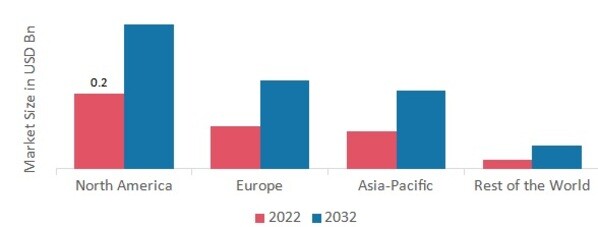Market Share
Breast Lesion Localization Market Share Analysis
Companies' strategic positioning based on market share within the Breast Lesion Localization Market is varied since this sector forms an integral part of breast cancer diagnostics and surgery. One key strategy involves technological innovation. This involves conducting a lot of research in advanced breast lesion localization methods, including wire-guided localizations, radioactive seed localizations, or magnetic tracers (Gupta & Mehta, 2019). Price plays a strategic role in market share positioning within the Breast Lesion Localization Market. Choosing a low-cost leadership approach allows some companies to offer their solutions at affordable rates, targeting all kinds of medical facilities that may have budgetary constraints, particularly in developing countries (Alcantara et al., 2019). Alternatively, other companies prefer premium pricing strategies, which make them stress issues like simplicity, reduced procedure time taken, or even distinctiveness associated with their respective breast-lesions localization devices; they are therefore meant for healthcare providers ready to purchase high-quality localizers from producers that invest highly into these items. Companies customize breast lesion localization technologies to fit into specific clinical settings or patient populations, and they are one of the key tactics in market segmentation. For example, localization methods can be designed for stereotactic-guided procedures or ultrasound-guided procedures or tailored for certain breast lesion characteristics. Breast lesion localization technologies distribution channel strategies play a critical role in ensuring that these technologies are made widely available and accessible. Often, these companies partner with hospitals, breast clinics, and imaging centers as part of strategic alliances to expand their coverage. The use of digital platforms has become increasingly valuable to healthcare professionals who seek efficient and user-friendly solutions for breast lesion localization by offering product promotion, ordering, and training support. Collaborations and strategic alliances with surgery associations, societies, and organizations contribute significantly toward market positioning. Promotional activities through marketing have a significant role to play in brand-building awareness preferences in the Breast Lesion Localization Market. They run education campaigns focusing on highlighting the benefits of their localization technologies and how they improve surgical planning to ensure better patient outcomes, among other considerations targeted at breast surgeons' radiologists, and healthcare administrators. Continuous research and development (R&D) are mandatory for firms that want to stay put within the breast-lesion location market, while others aim at strengthening positions. Various approaches like navigation systems imaging technology advance minimally invasive procedures employed during diagnosis and treatment, necessitate continuous innovation addressing emerging challenges and improvement on accuracy levels of localizations considering surgical modifications.






Leave a Comment